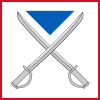Things will be very quiet from now until the middle of June because I’m busy with paid work. This is just a quick summary of how I’ve changed the wiki pages that represent books, and what I’m going to change next.
I haven’t changed the data model from what I outlined in my post about bibliographic data. That represents books at four levels:
- work
- major edition
- minor edition
- copy
When I first launched the wiki, each level had to be represented by a separate wiki page. That meant that even if a book had only one edition, it still had to have three different pages to represent the same thing, even without representing any individual copies (in practice only books published in the mid-17th century should have a page for each known copy). I started to realise that this was inconvenient and potentially confusing. It was even more confusing because the pages for each level didn’t clearly indicate what each level meant or where the page was in the hierarchy. You had to already know the data model to understand what was going on, but I can’t expect users who come in via search engines or social media links to have read the documentation. Even for editors who know the site better, it would be extra work to create so many pages when they’re not always needed.
To solve these problems, I’ve merged the forms and templates for major and minor editions into one form and one template called ‘Book’. This always has headings for each of work, major edition, and minor edition levels. Under each heading it tells you whether that level is represented by this page or another page, and displays the relevant data and/or links to other pages. This means that all three levels can be combined into one page if there is only one instance of each, or they can be represented by a separate page for each level if there are multiple major and minor editions, or anything in between. I think this will be much more flexible for editors and much easier for readers to understand. One potential drawback is that a page can be an instance of more than one type, which might not be very rigorous, but for now I’m not bothered because it’s much more convenient.
There is still a separate form and template for works which have more than one version (these versions can be book major editions, articles, or manuscripts) but I’ve got rid of the distinction between named and unnamed works because I think it should be easy enough to make up a name for a work, and it reduces the number of forms.
Here’s an example of how it works in practice. Malcolm Wanklyn’s new book, Parliament’s Generals, only has one major edition (because it’s new) but has more than one minor edition because it’s available as a hardback or ebook. Therefore the wiki pages that represent it are:
- Wanklyn – Parliament’s Generals (1st edition, 2019) represents work and major edition on the same page and displays a query for minor editions, which are represented by separate pages
- Wanklyn – Parliament’s Generals (1st ed, hardback, 2019) represents one minor edition and links to the above page for work and major edition levels
- Wanklyn – Parliament’s Generals (1st ed, Kindle ebook, 2019) represents another minor edition in the same way
I think the new layout makes it easier to visualise and understand the relationships between the different levels.
The next thing to do (when I get time) is apply the same thing to articles, so that work level can be represented on the same page if there has only ever been one version of an article.
I’m also planning to merge Fight and Siege into the same form and template, give them their own coordinates as well as (not instead of) locations relative to other entities, and remove the semantic properties for sides. At this stage I think it’s good to reduce the number of forms and properties as far as possible to avoid things getting overcomplicated.
